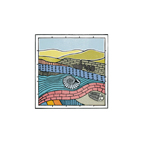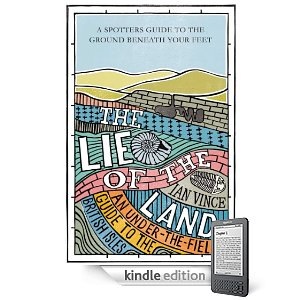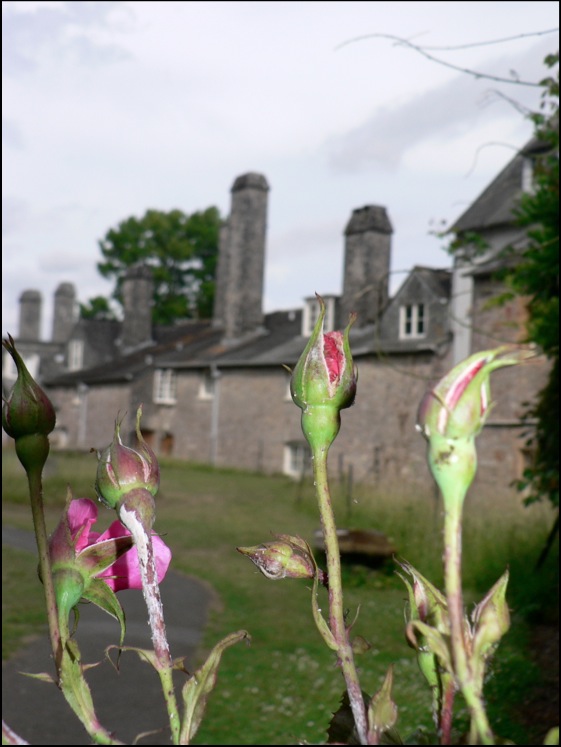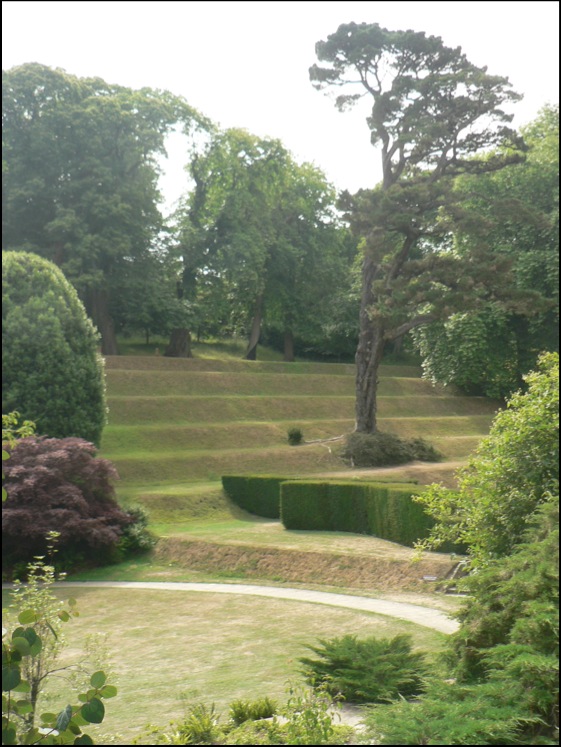Lie of the Land
Britain’s Hidden Wonders in Countryfile
Wednesday, 21 December, 2011. Filed under: Landscapes | Lie of the Land

For further details check out the Countryfile Magazine website.
Comments
A signed paperback of The Lie of the Land
Friday, 02 December, 2011. Filed under: Lie of the Land
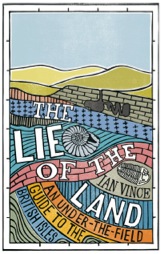
Click the Buy Now button below to order one securely through PayPal. If you want a personal inscription, send us a note via the contact form and Ian will oblige. Books are sent out the next working day.
Inspiration for a Grand Tour
Friday, 19 August, 2011. Filed under: Lie of the Land
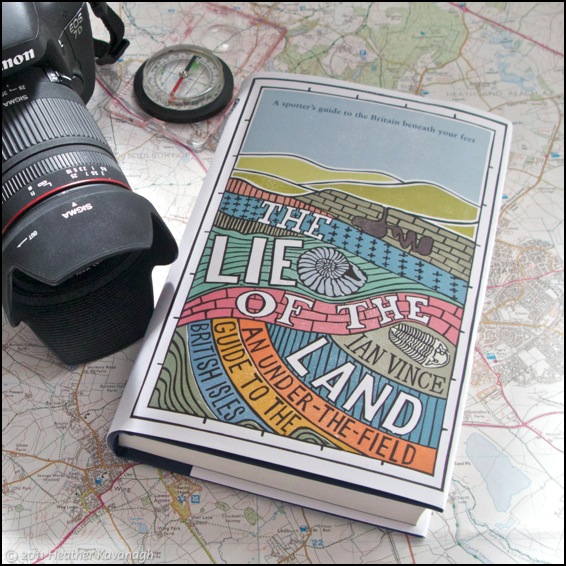
Photo: © 2011 Heather Kavanagh with thanks
It was lovely to hear recently that The Lie of the Land has inspired some of the thinking behind one reader’s retirement Grand Tour. Though only in the early planning stages at the moment, the very idea of Snaptophobic’s trip is particularly heartening because discovering Britain and realising how exotic it really is was one of the guiding thoughts behind the book and the club.
Do check out the rest of her blog as well.
Northwest Highlands Google Earth fly-by
Friday, 05 August, 2011. Filed under: Views & Scenery | Landscapes
For some time, we’ve been promising Google Earth fly-bys around bits of the British landscape that were featured in the book The Lie of the Land and now, we’ve finally got around to the first of these - a stunning fly-by of the Northwest Highlands from Smoo Cave in the north down to Ullapool in the south and back again. To view this file, you’ll need the free Google Earth application from Google - we’re working on being able to embed one in the browser but, to be honest, that’s a bit more technically involved so it won’t be along any time soon.
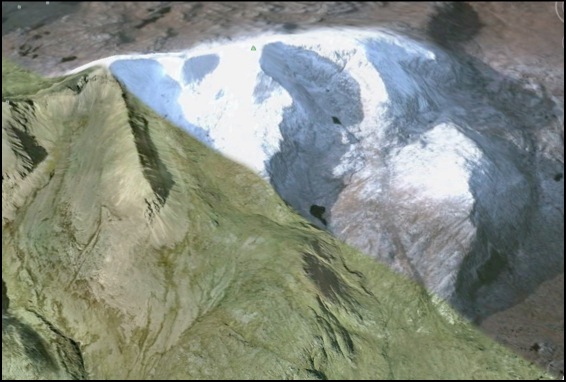
The complete tour takes about 17 minutes; if you are desk-bound for lunch, we’d recommend chomping your sandwiches as the Northwest Highlands float by underneath for a more relaxing break than might usually be the case.
We’ve kept it simple for now - no narration or music to accompany the scenery, but we might get bold in the future. We hope you enjoy the view.
Download Seventeen minutes in the Northwest Highlands.

The complete tour takes about 17 minutes; if you are desk-bound for lunch, we’d recommend chomping your sandwiches as the Northwest Highlands float by underneath for a more relaxing break than might usually be the case.
We’ve kept it simple for now - no narration or music to accompany the scenery, but we might get bold in the future. We hope you enjoy the view.
Download Seventeen minutes in the Northwest Highlands.
Support your local independent bookstore
Wednesday, 08 June, 2011. Filed under: Lie of the Land
For people who have requested availability of The Lie of the Land in local independent book shops, try ordering from the Hive - a new initiative that ties up hundreds of independent booksellers across Britain to a slick web ordering mechanism. You buy the book - often at a reasonable discount - and then have it delivered free to your local shop, where you collect it. You can then wander around your local bookseller and see what else they have selected, without having to negotiate a wall of celebrity autobiographies and ‘inspiring’ hard-luck misery memoirs.
Here are the links to the hardback and paperback.
Here are the links to the hardback and paperback.
Kindle e-book now available
Monday, 06 June, 2011. Filed under: Lie of the Land
We've known about it for a little while now but have not been able to link to it for some arcane reason, probably best known to Amazon itself, but the Kindle edition of The Lie of the Land is well and truly here.
It seems strangely apt that it has found its way into the world of e-books, if only because the book is partly an account of travels through Britain's amazing landscapes, so where better to read one of those than while on the move yourself?
The Lie of the Land
It seems strangely apt that it has found its way into the world of e-books, if only because the book is partly an account of travels through Britain's amazing landscapes, so where better to read one of those than while on the move yourself?
The Lie of the Land
The Lie of the Land
2011 Outdoor Book of the Year
Wednesday, 01 June, 2011. Filed under: Lie of the Land
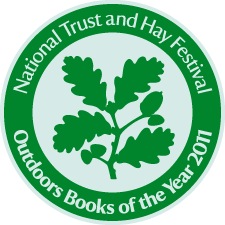
The endorsement, the result of a month-long poll to find the best recent writing about nature and the outdoors is shared with The Natural Navigator by Tristan Gooley, The Garden in the Clouds by Antony Woodward, Weeds by Richard Mabey and a number of other lovely books written from unique perspectives on the countryside. Hundreds of votes were cast and the winners were revealed at the Hay Festival - Britain’s most famous literary festival.
The British Landscape Club and Ian would like to thank everyone who voted for The Lie of the Land.
The Lie of the Land
and the People’s Book Prize
Friday, 14 January, 2011. Filed under: Lie of the Land

The People’s Book Prize is a new competition where there is no panel of judges - except the public. Vote for your non-fiction favourite at http://www.peoplesbookprize.com/section.php?id=2 - you have to register first to prevent any underhand behaviour (my underhand behaviour, not yours), but you get to vote for up to three books in each category. Voting for this round closes in February.
Buy a signed copy of The Lie of the Land
Friday, 03 September, 2010. Filed under: Lie of the Land
The BLC is offering signed copies of The Lie of the Land for the special price of £13.00 including p+p - £2.00 less than the published price. The book has gathered some excellent reviews since it was published earlier in the summer (see below) mostly concentrating on what an informative, but light, read it is.
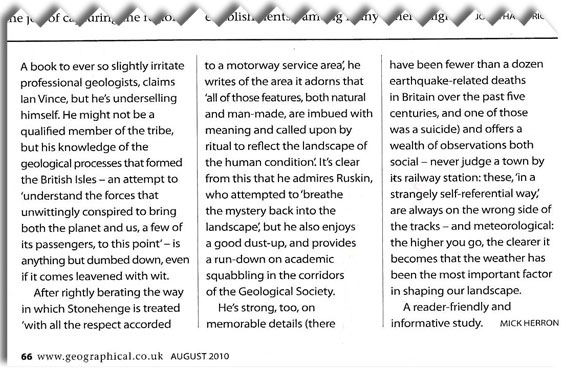
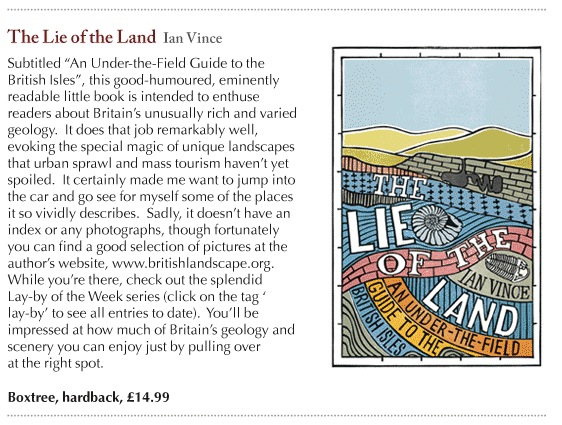
Dales Life
“Anyone who has ever picked up a pebble at the seaside or a rock on a moorland path will find invaluable Ian Vince's geological guide... you will understand the area round your British holiday cottage far more deeply than before.” Giles Foden (Author of The Last King of Scotland), Condé Nast Traveller
“Takes the reader on an explosive journey across millennia. Continents glide thousands of miles like contestants in Strictly Come Dancing, Scotland swelters on the Equator and Snowdonia boasts a volcanic ring of fire with mountains taller than Everest.” Daily Express
“Brings an easy touch to a subject most would leave to a hirsute geographer” The Field
“The English Channel is a relatively recent addition to the landscape, caused by two enormous floods which took place 450,000 and 200,000 years ago respectively, as huge, glacier-fed lakes burst their banks. Had it not been for these two inundations, Vince muses, the history of Britain - and even the world - could have turned out very differently” The Scotsman
“Far from a dry, scholarly tome, The Lie of the Land is brim full of facts dressed up in a lively narrative more akin to a fictional adventure. Vince is a passionate soul and natural wordsmith.” Western Morning News
“This is a layperson's guide to why the scenery in Britain is so varied. It starts in the far north-west of Scotland, describing and explaining the oldest rocks in the British Isles. It then explains the concept of geological time before starting a backwards journey from the most recent past. The geology of each period is explained with reference to its effects on the landscape we see around us and how the rocks were formed. There is a map with each chapter showing where rocks of the period being discussed are at the surface.
The book is written in a friendly and accessible style, with enough use of anecdote and humour to make it an enjoyable and relatively light read, while still being informative. There are suggestions for further reading in the back for anyone who wants to go into the geology in more detail. I enjoyed reading it even though (in theory) I should already know most of what it says. I would recommend this to anyone with an interest in landscapes.” Science File book reviews - sciencefile.org
To buy 1 copy for £13.00 inc p+p, click Buy Now below to pick up your copy and find out about the Britain beneath your feet. If you want more copies or first class post, go to the BLC shop


Dales Life
“Anyone who has ever picked up a pebble at the seaside or a rock on a moorland path will find invaluable Ian Vince's geological guide... you will understand the area round your British holiday cottage far more deeply than before.” Giles Foden (Author of The Last King of Scotland), Condé Nast Traveller
“Takes the reader on an explosive journey across millennia. Continents glide thousands of miles like contestants in Strictly Come Dancing, Scotland swelters on the Equator and Snowdonia boasts a volcanic ring of fire with mountains taller than Everest.” Daily Express
“Brings an easy touch to a subject most would leave to a hirsute geographer” The Field
“The English Channel is a relatively recent addition to the landscape, caused by two enormous floods which took place 450,000 and 200,000 years ago respectively, as huge, glacier-fed lakes burst their banks. Had it not been for these two inundations, Vince muses, the history of Britain - and even the world - could have turned out very differently” The Scotsman
“Far from a dry, scholarly tome, The Lie of the Land is brim full of facts dressed up in a lively narrative more akin to a fictional adventure. Vince is a passionate soul and natural wordsmith.” Western Morning News
“This is a layperson's guide to why the scenery in Britain is so varied. It starts in the far north-west of Scotland, describing and explaining the oldest rocks in the British Isles. It then explains the concept of geological time before starting a backwards journey from the most recent past. The geology of each period is explained with reference to its effects on the landscape we see around us and how the rocks were formed. There is a map with each chapter showing where rocks of the period being discussed are at the surface.
The book is written in a friendly and accessible style, with enough use of anecdote and humour to make it an enjoyable and relatively light read, while still being informative. There are suggestions for further reading in the back for anyone who wants to go into the geology in more detail. I enjoyed reading it even though (in theory) I should already know most of what it says. I would recommend this to anyone with an interest in landscapes.” Science File book reviews - sciencefile.org
To buy 1 copy for £13.00 inc p+p, click Buy Now below to pick up your copy and find out about the Britain beneath your feet. If you want more copies or first class post, go to the BLC shop
Geographical Review
Monday, 16 August, 2010. Filed under: Lie of the Land
There’s a lovely review of the BLC manual The Lie of the Land in the August issue of Geographical Magazine, the official magazine of the Royal Geographical Society. I’ve clipped out the body of it below.


Browse The Lie of the Land
Tuesday, 17 August, 2010. Filed under: Lie of the Land
We’re delighted to be able to tell you that the unofficial manual of the British Landscape Club, The Lie of the Land by Ian Vince is now in a browsable condition online, with the permission of the publishers, Pan Macmillan. So dive in as if you were in a bookstore - there’s a selection of links at the bottom to buy it from if you fancy picking up a tangible copy or just want to read the whole darn thing.
Buy from
Buy from
The geographical delights of Port Eliot
Wednesday, 28 July, 2010. Filed under: Lie of the Land
I’ve been away for a few days at Port Eliot for Part 1 of my official launch of the BLC - Part 2 is at Camp Bestival this weekend at 6.20 pm in the tent of the East Lulworth Literary Institute, along with some Jurassic thoughts.
Maybe I’ll see you there, but in the meantime, here are some shots of the Port Eliot landscape and some thoughts about it. The immediate area is a complex one with hard volcanic lavas, ash and ‘tuffs’ making up a west-east ridge of high ground to the estuaries of the Rivers Tiddy and Lynher, while two separate areas of rough slate - which the Cornish refer to as ‘killas’ - run to the north and south of the ridge. The Caught by the River tent was situated in a small quarry which may have provided some killas for the estate walls. You can see the high ground in the first picture and its continuation on the far side of the Tiddy in the second picture - the line of trees mark the course of a cutting that takes the Great Western line towards Plymouth. The lava and ash made their way into the landscape during a time that Southern Britain and Scotland were being welded together around 400 or so million years ago and a Himalayan range of mountains was being formed to the North.
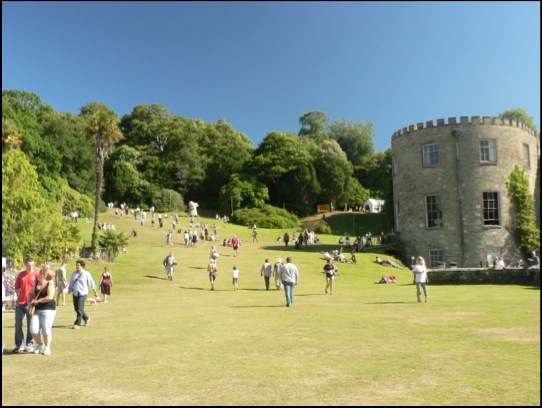
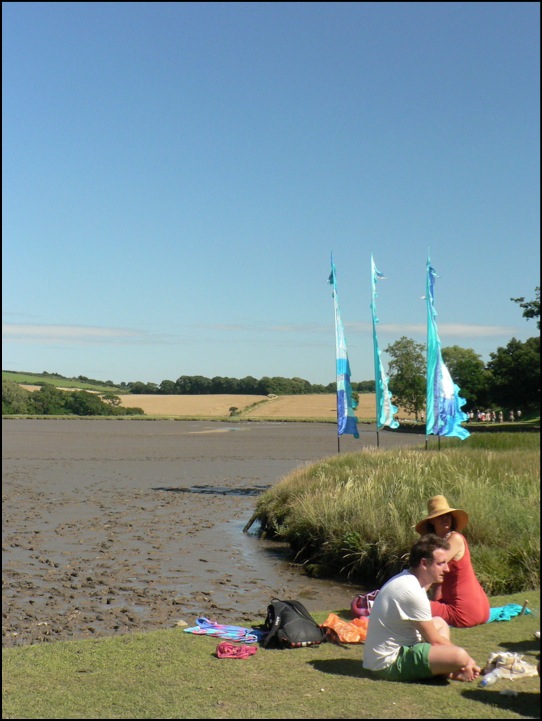
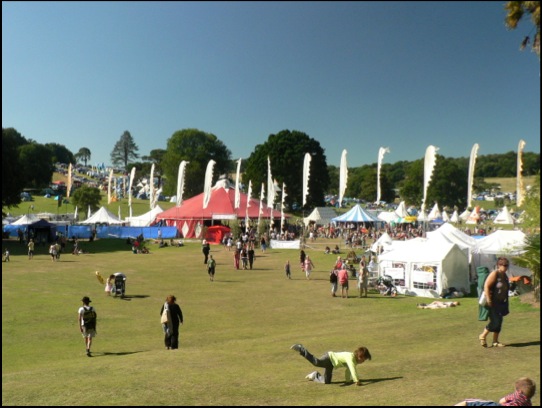
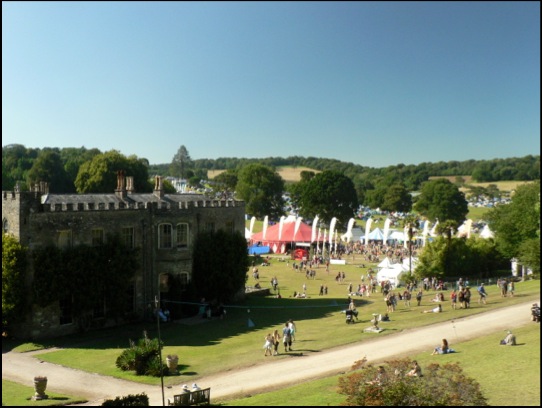
Maybe I’ll see you there, but in the meantime, here are some shots of the Port Eliot landscape and some thoughts about it. The immediate area is a complex one with hard volcanic lavas, ash and ‘tuffs’ making up a west-east ridge of high ground to the estuaries of the Rivers Tiddy and Lynher, while two separate areas of rough slate - which the Cornish refer to as ‘killas’ - run to the north and south of the ridge. The Caught by the River tent was situated in a small quarry which may have provided some killas for the estate walls. You can see the high ground in the first picture and its continuation on the far side of the Tiddy in the second picture - the line of trees mark the course of a cutting that takes the Great Western line towards Plymouth. The lava and ash made their way into the landscape during a time that Southern Britain and Scotland were being welded together around 400 or so million years ago and a Himalayan range of mountains was being formed to the North.




Dartington
Wednesday, 21 July, 2010. Filed under: Landscapes
The Lie of the Land reviews
Friday, 13 August, 2010. Filed under: Lie of the Land
The Lie of the Land has garnered some nice reviews since publication - here are a few of them.

Dales Life
“Anyone who has ever picked up a pebble at the seaside or a rock on a moorland path will find invaluable Ian Vince's geological guide... you will understand the area round your British holiday cottage far more deeply than before.” Giles Foden (Author of The Last King of Scotland), Condé Nast Traveller
“Takes the reader on an explosive journey across millennia. Continents glide thousands of miles like contestants in Strictly Come Dancing, Scotland swelters on the Equator and Snowdonia boasts a volcanic ring of fire with mountains taller than Everest.” Daily Express
“Brings an easy touch to a subject most would leave to a hirsute geographer” The Field
“The English Channel is a relatively recent addition to the landscape, caused by two enormous floods which took place 450,000 and 200,000 years ago respectively, as huge, glacier-fed lakes burst their banks. Had it not been for these two inundations, Vince muses, the history of Britain - and even the world - could have turned out very differently” The Scotsman
“Far from a dry, scholarly tome, The Lie of the Land is brim full of facts dressed up in a lively narrative more akin to a fictional adventure. Ian is a passionate soul and natural wordsmith.” Western Morning News
There’s a lovely review of the BLC manual The Lie of the Land in the August issue of Geographical Magazine, the official magazine of the Royal Geographical Society. I’ve clipped out the body of it below.


Dales Life
“Anyone who has ever picked up a pebble at the seaside or a rock on a moorland path will find invaluable Ian Vince's geological guide... you will understand the area round your British holiday cottage far more deeply than before.” Giles Foden (Author of The Last King of Scotland), Condé Nast Traveller
“Takes the reader on an explosive journey across millennia. Continents glide thousands of miles like contestants in Strictly Come Dancing, Scotland swelters on the Equator and Snowdonia boasts a volcanic ring of fire with mountains taller than Everest.” Daily Express
“Brings an easy touch to a subject most would leave to a hirsute geographer” The Field
“The English Channel is a relatively recent addition to the landscape, caused by two enormous floods which took place 450,000 and 200,000 years ago respectively, as huge, glacier-fed lakes burst their banks. Had it not been for these two inundations, Vince muses, the history of Britain - and even the world - could have turned out very differently” The Scotsman
“Far from a dry, scholarly tome, The Lie of the Land is brim full of facts dressed up in a lively narrative more akin to a fictional adventure. Ian is a passionate soul and natural wordsmith.” Western Morning News
There’s a lovely review of the BLC manual The Lie of the Land in the August issue of Geographical Magazine, the official magazine of the Royal Geographical Society. I’ve clipped out the body of it below.

Monstrous Carbuncle
I like Dorset - as mentioned in this week’s Lay-by of the Week, it is where a lot of the ideas for The Lie of the Land came from and it is a county that seems to have as many different facets as it has market towns.
But one of those towns – and not just any old market town, but Dorset’s county town – will never be the same again. For Dorchester has been tainted by its association with the monstrous carbuncle that is HRH Prince Charles’ Poundbury or, to give it a name accidentally arrived at in a Freudian slip of the tongue, Poundland.
View Monstrous Carbuncle in a larger map
This grotesque and repulsive display of architectural pus sits on the eastern horizon as you approach Dorchester from the west. The awful buildings infect the surrounding landscape with their weak-minded parody of a passing resemblance to a rough similarity to a half-remembered Tuscan hill-top village. Who-ever presided over this inferior and wholly unaesthetic effort should be shot through the lungs with high-velocity 2H pencils.
Some of Poundbury is well-executed, even if it is obviously the work of a cobwebbed mind. While the Duke of Cornwall proclaims his love of traditional vernacular architecture and actually has interesting and useful ideas about the sustainability of communities, his biggest showcase looks like a malformed bleb from the side of the A35.
But one of those towns – and not just any old market town, but Dorset’s county town – will never be the same again. For Dorchester has been tainted by its association with the monstrous carbuncle that is HRH Prince Charles’ Poundbury or, to give it a name accidentally arrived at in a Freudian slip of the tongue, Poundland.
View Monstrous Carbuncle in a larger map
This grotesque and repulsive display of architectural pus sits on the eastern horizon as you approach Dorchester from the west. The awful buildings infect the surrounding landscape with their weak-minded parody of a passing resemblance to a rough similarity to a half-remembered Tuscan hill-top village. Who-ever presided over this inferior and wholly unaesthetic effort should be shot through the lungs with high-velocity 2H pencils.
Some of Poundbury is well-executed, even if it is obviously the work of a cobwebbed mind. While the Duke of Cornwall proclaims his love of traditional vernacular architecture and actually has interesting and useful ideas about the sustainability of communities, his biggest showcase looks like a malformed bleb from the side of the A35.
Lay-by of the week: Askerswell from the A35
This week I can tie three loose ends and write not only about lay-bys, but also the Dorset landscape and the road trip that triggered me into writing The Lie of the Land in the first place.
View Larger Map
One bright and crisp winters day a short breath after Christmas, we were driving through Dorset as we made our way back from Cornwall. The journey was quite familiar to me and I had never given it much thought. A couple of years before, I had come the closest to thinking deeply about travel when two friends and I covered the same ground as part of an epic, 15 mph journey across England in an electric milk float but, crucially we had picked a different route for this stretch.
I was on the A35, a murderously busy road we had escaped from while on the float - a quick turn-off that happened to land us in Arcadia, an enchanted valley near Little Bredy trapped somewhere between dusk and the early 1950s. It was the encapsulation of pastoral beauty and I will remember the scene for ever.
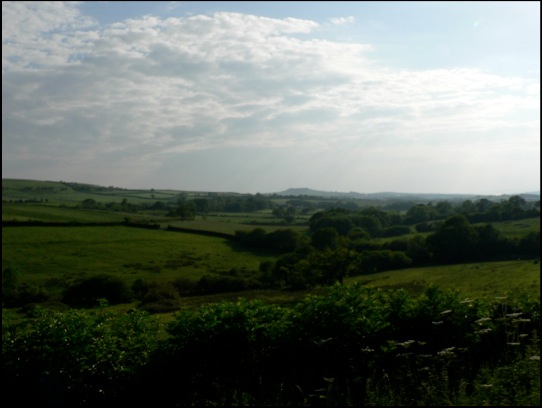
As so often happens in Britain though, by catching one thing, you miss another and the A35 - for all its homicidal ways - is the scene of something on a par with our Dorset Arcadia but in a different way. The stretch of it we avoided, between Dorchester and Bridport, affords awe-inspiring views of the lumpy, bumpy Dorsetshire hills, the festival of buxom hummocks that made it into the introduction to The Lie of the Land.
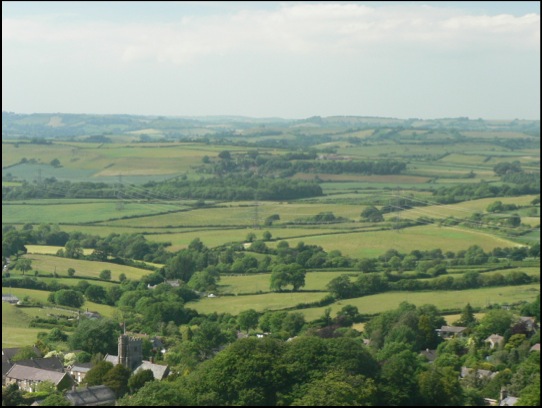
As ever, all attempts to capture such grandeur on a soul-less semiconductor fail miserably. I’ve taken my version of the Google Street View, but the best stuff is on the other side of the road when the road reaches its height and the views over the Dorset coast are breathtaking. You really have to see the view for yourself.
View Larger Map
One bright and crisp winters day a short breath after Christmas, we were driving through Dorset as we made our way back from Cornwall. The journey was quite familiar to me and I had never given it much thought. A couple of years before, I had come the closest to thinking deeply about travel when two friends and I covered the same ground as part of an epic, 15 mph journey across England in an electric milk float but, crucially we had picked a different route for this stretch.
I was on the A35, a murderously busy road we had escaped from while on the float - a quick turn-off that happened to land us in Arcadia, an enchanted valley near Little Bredy trapped somewhere between dusk and the early 1950s. It was the encapsulation of pastoral beauty and I will remember the scene for ever.

As so often happens in Britain though, by catching one thing, you miss another and the A35 - for all its homicidal ways - is the scene of something on a par with our Dorset Arcadia but in a different way. The stretch of it we avoided, between Dorchester and Bridport, affords awe-inspiring views of the lumpy, bumpy Dorsetshire hills, the festival of buxom hummocks that made it into the introduction to The Lie of the Land.

As ever, all attempts to capture such grandeur on a soul-less semiconductor fail miserably. I’ve taken my version of the Google Street View, but the best stuff is on the other side of the road when the road reaches its height and the views over the Dorset coast are breathtaking. You really have to see the view for yourself.
Welcome...
Wednesday, 16 June, 2010. Filed under: Lie of the Land
The British Landscape Club is featured on the Guardian website today in the form of a small slideshow of some of the oldest bits of Britain.
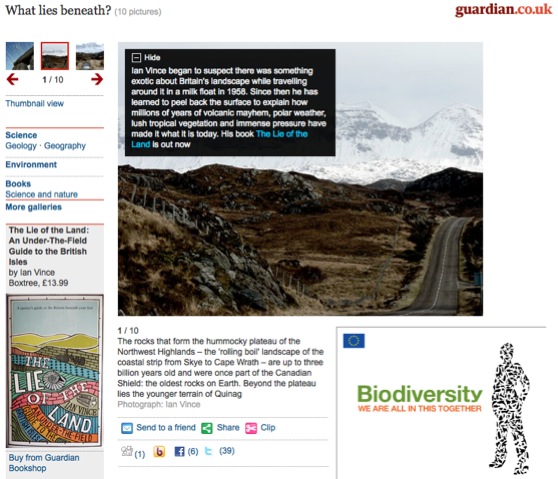
A big welcome to you if you have discovered us via the Guardian and please consider joining the BLC. There’s at least one good reason and that is that it’s completely free and there’s also a rather fetching and free badge. No catches, just tell us where to send it and we will pop in a small sampler of Chapter 1 of The Lie of the Land. That’s it. No hard sell - just relax and enjoy the view.
Join the BLC for free.

A big welcome to you if you have discovered us via the Guardian and please consider joining the BLC. There’s at least one good reason and that is that it’s completely free and there’s also a rather fetching and free badge. No catches, just tell us where to send it and we will pop in a small sampler of Chapter 1 of The Lie of the Land. That’s it. No hard sell - just relax and enjoy the view.
Join the BLC for free.
The Lie of the Land is launched
Friday, 04 June, 2010. Filed under: Lie of the Land
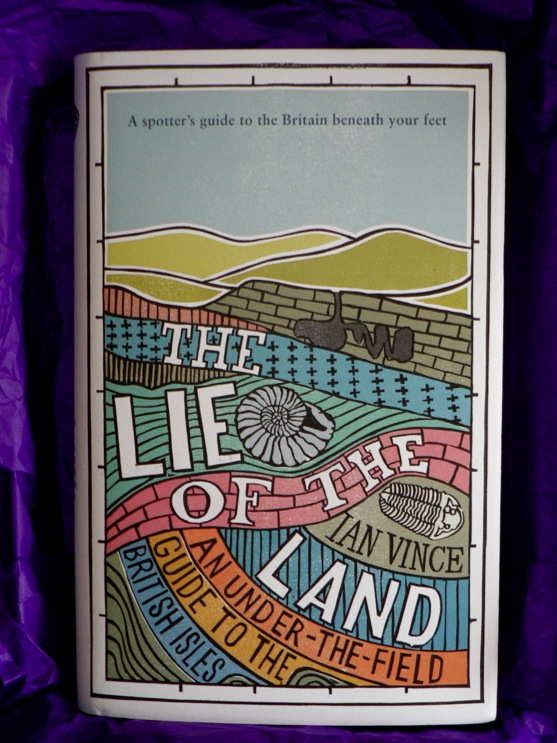 Today, Friday June 4, is the official publication date of The Lie of the Land, the BLC’s unofficial under-the-field guide to the British landscape, as written by Ian Vince The Lie of the Land was written over the course of 14 months during 2009 and 2010 as Ian travelled back and forth across Britain to tell the truly extraordinary story of how our beautiful landscape was formed.
Today, Friday June 4, is the official publication date of The Lie of the Land, the BLC’s unofficial under-the-field guide to the British landscape, as written by Ian Vince The Lie of the Land was written over the course of 14 months during 2009 and 2010 as Ian travelled back and forth across Britain to tell the truly extraordinary story of how our beautiful landscape was formed.Needless to say, it is available in all good bookshops, as well as their online counterparts, Amazon, Waterstones and Pickabook. Ian would obviously love you to go and buy it in your droves but not just so that he can write something along similar lines for the next one, but also because the book’s message is all about celebrating the awesomely fascinating landscapes we are lucky enough to have in Britain.
The Lie of the Land is available…
Wednesday, 02 June, 2010. Filed under: Lie of the Land

The Lie of the Land is officially published on the June 4 but online retailers including Amazon, Waterstones and Pickabook are now dispatching copies so you can have it in time for official pub. day (this is the day - among many others - that you can find authors in the pub).
British Volcanoes: Arthur's Seat, Edinburgh
Thursday, 20 May, 2010. Filed under: Volcano | Landscapes
As the ash cloud drifts this way and that around the North Atlantic - an ocean which owes its existence to the same forces responsible for Eyjafjallajökull itself - it’s time to pause and contemplate our own volcanoes again.
Last time we looked at the remains of the caldera on the Ardnamurchan peninsula, a volcano that may have been the result of the same hotspot as Eyjafjallajökull but is, in any case, related by virtue of its eruption at the start of the rifting process which first opened up the Atlantic.
This time we are concentrating on a more urban setting, on a volcano that last erupted in the Carboniferous period (between 360 and 290 million years ago) in the middle of what is now Edinburgh. It would have looked very different then, when much of Britain was a tropical swamp and a kind of prototype dragonfly flitted around the marsh with a two-and-a-half foot wing span; when arthropods which bear a resemblance to modern millipedes reached lengths of over eight-and-a-half feet; when all of this gigantism was made possible by an atmospheric oxygen concentration not far from double modern levels.
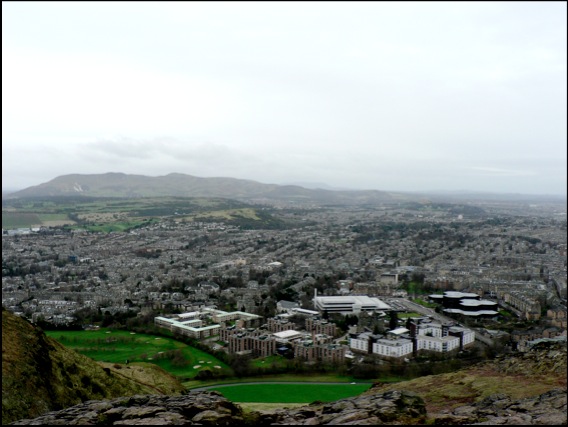
The view from the slopes of Arthur’s Seat
Around other parts of what is now the Midland Valley of Scotland, coal was being produced in the swamps of a coastal plain that was not unlike the northern shores of the Gulf of Mexico today (without the devastating oil-spill, of course). For 50 million years, this tranquil scene was occasionally interrupted by volcanic eruptions. First at what is now the Castle, then later in Holyrood Park, eventually forming the feature now known as Arthur’s Seat.
In the related volcanic activity that formed Salisbury Crags (below), however, the molten rock never actually made it to the surface as a volcanic eruption, cooling deep within the earth instead. By the way, if you live in London and don’t have a snowball’s chance in hell of getting to see Salisbury Crags or are simply too metropolitan to countenance travelling beyond the M25, the mountain has come to you instead. A lot of London is paved with it.
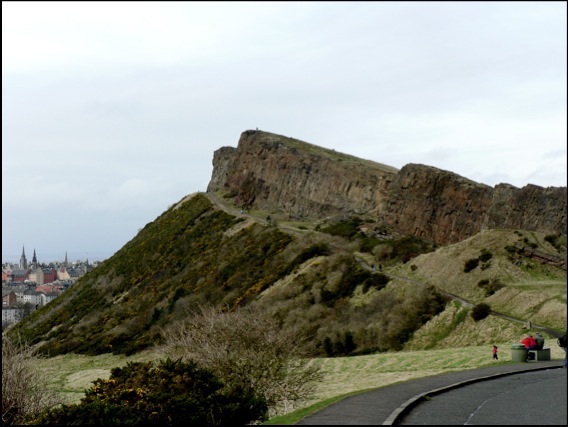 Salisbury Crags
Salisbury Crags
Last time we looked at the remains of the caldera on the Ardnamurchan peninsula, a volcano that may have been the result of the same hotspot as Eyjafjallajökull but is, in any case, related by virtue of its eruption at the start of the rifting process which first opened up the Atlantic.
This time we are concentrating on a more urban setting, on a volcano that last erupted in the Carboniferous period (between 360 and 290 million years ago) in the middle of what is now Edinburgh. It would have looked very different then, when much of Britain was a tropical swamp and a kind of prototype dragonfly flitted around the marsh with a two-and-a-half foot wing span; when arthropods which bear a resemblance to modern millipedes reached lengths of over eight-and-a-half feet; when all of this gigantism was made possible by an atmospheric oxygen concentration not far from double modern levels.

The view from the slopes of Arthur’s Seat
Around other parts of what is now the Midland Valley of Scotland, coal was being produced in the swamps of a coastal plain that was not unlike the northern shores of the Gulf of Mexico today (without the devastating oil-spill, of course). For 50 million years, this tranquil scene was occasionally interrupted by volcanic eruptions. First at what is now the Castle, then later in Holyrood Park, eventually forming the feature now known as Arthur’s Seat.
In the related volcanic activity that formed Salisbury Crags (below), however, the molten rock never actually made it to the surface as a volcanic eruption, cooling deep within the earth instead. By the way, if you live in London and don’t have a snowball’s chance in hell of getting to see Salisbury Crags or are simply too metropolitan to countenance travelling beyond the M25, the mountain has come to you instead. A lot of London is paved with it.
 Salisbury Crags
Salisbury CragsWin a hamper in our landscape photo competition.
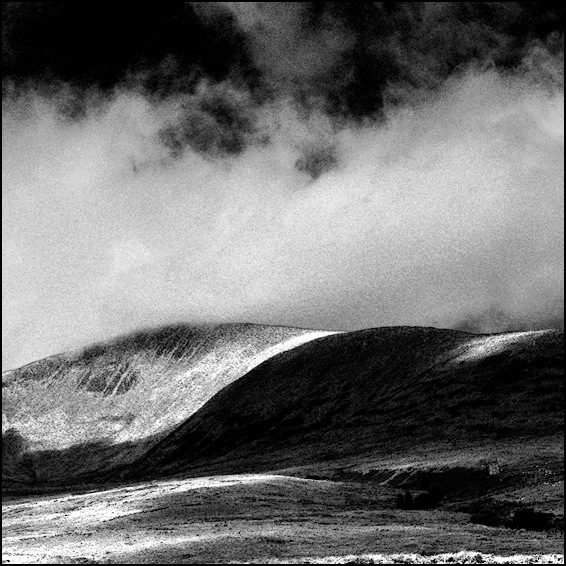
To celebrate the launch of Lie of the Land, The British Landscape Club’s under-the-field-guide to the British landscape, we are running a photography competition to find Britain's best photographed landscape.
So get snapping those buxom hummocks, discordant coastlines and stone circles and submit them to the Lie of the Land Flickr photo pool at http://www.flickr.com/groups/lieoftheland/.
The winner - who will win a lovely picnic hamper - will be announced July 30 2010 Leading up to the announcement we will feature ten photos a week right here on the website. There will be also be runner-up prizes of signed copies of Lie of the Land.
For general competition terms and conditions go to:
http://www.panmacmillan.com/displayPage.asp?PageID=3823
Please be assured that your photos will only be used in connection with this competition and any publicity it generates - which may include the websites of national and local newspapers. The submitter retains all copyright to their photos and the right to a byline/credit where ever it is used.
British Volcanoes: Ardnamurchan
If your holiday plans are threatened by geological violence this year, why not make the most of the disruption and stay in Britain instead? After all, there’s no need to be stranded on the other side of the world in pursuit of amazing landscapes when we have more than enough of our own - and that includes volcanoes.
At the risk of sounding like a Travelodge brochure, Britain’s volcanic heritage can be discovered in many locations across the UK from the wilds of Ardnamurchan to the slopes of Snowdonia - there are even city centre volcanoes for your convenience. We’ll be looking at all of these over the next few weeks, but we’re starting at mainland Britain’s most westerly point - not Land’s End as is popularly supposed, but the Point of Ardnamurchan in Scotland.
View Larger Map
The Ardnamurchan Peninsula, seen here courtesy of Google, was the site, around 65 million years ago, of intense volcanic activity. Over a period of approximately three million years, the Ardnamurchan volcano would have undergone a series of awe-inspiring eruptions culminating in the collapse of the cone and crater onto the chamber of molten rock beneath, forming the caldera - the remains of which we see today. The hotspot that created it may even be the same plume that now lies under Iceland obstructing your travel plans.
In the intervening period, wind, rain and, the most destructive of them all, glacial ice, have worn down the landscape. The following image is from the southern part of the crater itself, while the view north - like most of the journey along this road - is obstructed by the lie of the land.
View Larger Map
At the risk of sounding like a Travelodge brochure, Britain’s volcanic heritage can be discovered in many locations across the UK from the wilds of Ardnamurchan to the slopes of Snowdonia - there are even city centre volcanoes for your convenience. We’ll be looking at all of these over the next few weeks, but we’re starting at mainland Britain’s most westerly point - not Land’s End as is popularly supposed, but the Point of Ardnamurchan in Scotland.
View Larger Map
The Ardnamurchan Peninsula, seen here courtesy of Google, was the site, around 65 million years ago, of intense volcanic activity. Over a period of approximately three million years, the Ardnamurchan volcano would have undergone a series of awe-inspiring eruptions culminating in the collapse of the cone and crater onto the chamber of molten rock beneath, forming the caldera - the remains of which we see today. The hotspot that created it may even be the same plume that now lies under Iceland obstructing your travel plans.
In the intervening period, wind, rain and, the most destructive of them all, glacial ice, have worn down the landscape. The following image is from the southern part of the crater itself, while the view north - like most of the journey along this road - is obstructed by the lie of the land.
View Larger Map
